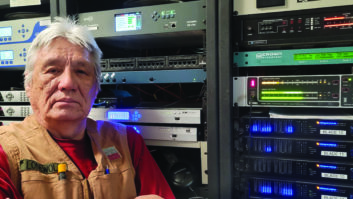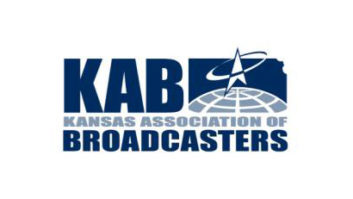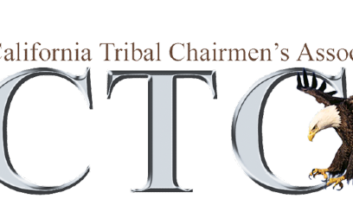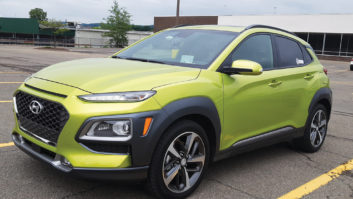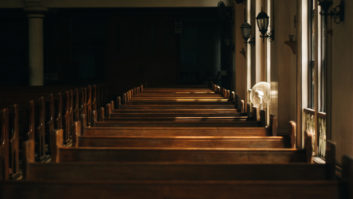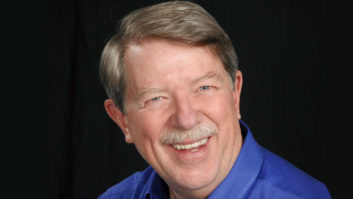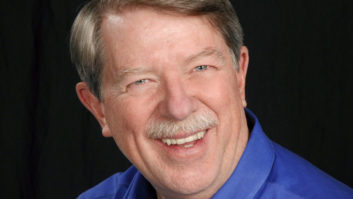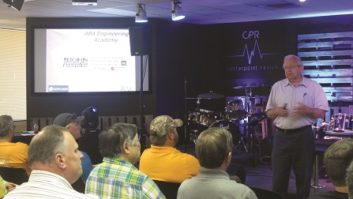Community Broadcasters, CPB Help Stations Develop Different Models of Financial Support
Native VoicesStations participating in the new Center for Native American Public Radio (all are FM, unless noted):
Alaska
KNBA, Anchorage
KBRW (FM/AM), Barrow
KYUK, Bethel
KCUK, Chevak
KZPA, Fort Yukon
KIYU, Galena
KOTZ, Kotzebue
KSDP, Sand Point
KUHB, St. Paul Island
KNSA, Unalakleet
Arizona
KUYI, Hotevilla
KGHR, Tuba City
KNNB, Whiteriver
KRMH, Teenospos
California
KIDE, Hoopa
Colorado
KRZA, Alamoza
KSUT/KUTE, Ignacio
Montana
KGVA, Halem
North Dakota
KEYA, Belcourt
KMHA, New Town
KABU, St. Michaels
New Mexico
KCIE, Dulce
KABR, Magdalena
KTDB, Pine Hill
KSHI, Zuni
Oregon
KWSO, Warm Springs
South Dakota
KILI, Porcupine
KLND, McLaughlin
Washington
KYNR, Toppenish
Wisconsin
WOJB, Hayward
Wyoming
KWRR, Ft. Washakie
Help is on the way for a form of radio that few Americans have ever heard.
(click thumbnail)David Sam of public station KNBA(FM) in Anchorage, Alaska, hosts the Native American program ‘Indigenous Expressions.’
Native American radio, serving mostly isolated Indian reservations in the western half of the United States, recently got a boost: The Corporation for Public Broadcasting earmarked $1.5 million to establish a Center for Native American Radio. As a result, this largely unknown radio service hopes to better serve communities in a way that no other medium can do as effectively.
More than 30 Native American-run stations in a dozen states from Alaska to Wisconsin will be directly affected by the new center’s activities in the short run. In the long run the stations’ future fundraising efforts – like much of its programming – could create something different from today’s typical public broadcasting model.
Different model
The idea for the resource center resulted from a funding proposal from the National Federation of Community Broadcasters. That proposal, in turn, grew out of a meeting last spring of Native American public broadcasters.
“One thing that’s clear is the model of financial support that’s worked for other public stations isn’t appropriate for the low-income communities that these Native American stations primarily serve,” said NFCB President/CEO Carol Pierson.
“This grant is a chance to identify how to raise significant new money to finance stations’ operations and Native American programs.” Pierson said the project also hopes to discover new models for generating long-term, sustainable funding.
“Our plan is to do a major feasibility study of ideas on generating funding at the national level, since it would be very difficult for these local stations to get it, otherwise, from typical public radio (listener contributions),” she said. By not working within a larger, more vocal station group, many individual broadcasters simply would not have the resources and capital necessary to raise adequate funding effectively on their own.
CPB President/CEO Kathleen Cox said her group recognizes that Native American stations “operate in very difficult economic environments where traditional public radio models of support like pledge drives and underwriting are not generally as successful. We believe the new center can take the lead in developing new financial venues and other sources of support.”
She said the center also will provide expertise in accounting, programming, staffing and other necessary assistance that small stations, especially, most require and can least afford.
Many voices
Although there are small pockets of commercial radio operations owned by Native American interests, such as Arizona’s Navajo reservation in Window Rock, public radio’s approach to securing underwriting grants is more suited to Native American radio’s goals of providing a variety of short- and long-form niche cultural programming – formats that usually do not appeal to traditional spot advertisers.
Native American broadcasters believe what makes their programming unique centers on the role it plays in cultural preservation. Most stations provide at least some programs in the native languages of their markets – often several languages – and they say preserving tribal customs and history through education and public service are important to listeners who cannot rely on similar services from other electronic media.
Senate Commerce Committee Chairman John McCain, R-Ariz., whose state has four Native American stations, has called local Native American radio services “an invaluable tool that connects listeners with each other and their heritage.” His committee held a hearing on the CPB project last summer. The management of KUYI(FM) in Hotevilla, Ariz., testified that local-language broadcasts have resulted in renewed interest in everyday use of the Hopi language.
At KIDE(FM) in Hoopa, Calif., recent daily programming included “Native Sounds and Voices” and “Earthsongs,” as well as “Different Drums” – along with NPR newscasts and music by the Grateful Dead. Some of the California station’s programming comes courtesy of KNBA(FM) in Anchorage, Alaska. Operated by the Koahnic Broadcasting Corp., KNBA(FM) is the only Native American station in the country to serve primarily an urban audience.
Koahnic produces shows that are distributed nationally via satellite, such as the daily one-hour call-in “Native America Calling” and “National Native News,” from its production center at the University of New Mexico in Albuquerque. KNBA-Koahnic President/CEO Jaclyn Sallee said a few dozen stations, not all of them Native American, carry some of their programming.
Sallee said about 10 percent of the nearly quarter-million listeners in the Anchorage market are Native American; she is an Inupiaq Eskimo. She said KNBA(FM) claims about 10,000 weekly listeners.
“We went on-air for the first time back in October 1996 because there was no radio service for Native Americans,” she said.
Anchorage is a culturally diverse region that is referred to locally as “Alaska’s native village,” she said, including the tribal cultures of the Aleut, Athabascan, Inupiaq, Jicarilla Apache, Navajo, Ojibway, Potawatomi, Siberian Yupik, Tlingit, Tsimpsean and Yupik. And the common communicator for everyone, Sallee said, often is achieved through music.
“We have many different tribes here all coming together, and we offer a unique service of alternative music that we assemble from independent artists, from the record labels, from all types of sources, for our local and national programs; while other (non-music) programs such as call-ins, news and talk shows deal directly with the issues and problems facing Native Americans in their everyday lives.”
Sharing resources
KNBA(FM)’s eight-day pledge drive last fall brought in $65,000, somewhat short of its $85,000 goal. Sallee expected that another mini-pledge drive this winter, along with help from some statewide and local underwriters, should help make up for the temporary shortfall.
“We currently have 1,200 contributing public radio members who are very supportive,” she said. Her full-time staff in Anchorage is usually around 10, with eight staffers working at the New Mexico production facility.
KNBA(FM) routinely shares its engineer and other expertise with Native American stations in Alaska (visits to other stations often take days, given the enormous size of the state). Sallee said she believes the new center will not only help create effective money-raising models unique to public broadcasting, but also help strengthen the training and other non-technical networking of Native American stations in her state and elsewhere.
Technically, in a separate initiative, CPB announced a $365,000 grant in September for the Alaska Public Broadcasting Broadband Initiative, to link 30 Alaska public radio and TV stations, including KNBA(FM), via a high-speed data network.
KNBA(FM), which provides an abundance of additional listener resources on its Web site, streams its programming online at www.publicbroadcasting.net/kbc/ppr/index.shtml.
While some Indian reserves have become quite wealthy in recent years from lucrative gambling casinos, nearly all Native American stations, most of which are full-power FMs, are located in isolated regions of the nation where casinos are not viable options.
The NFCB planned to hire two full-time people for the new resource center and to dedicate one of its current staffers to the project part-time. In additional to seeking new forms of long-term funding, the center will attempt to remain flexible enough to provide whatever aid is needed at any given time.
“We’re trying to create the H&R Block of possible radio services,” NFCB’s Pierson said, “by providing help in any way we can.”






